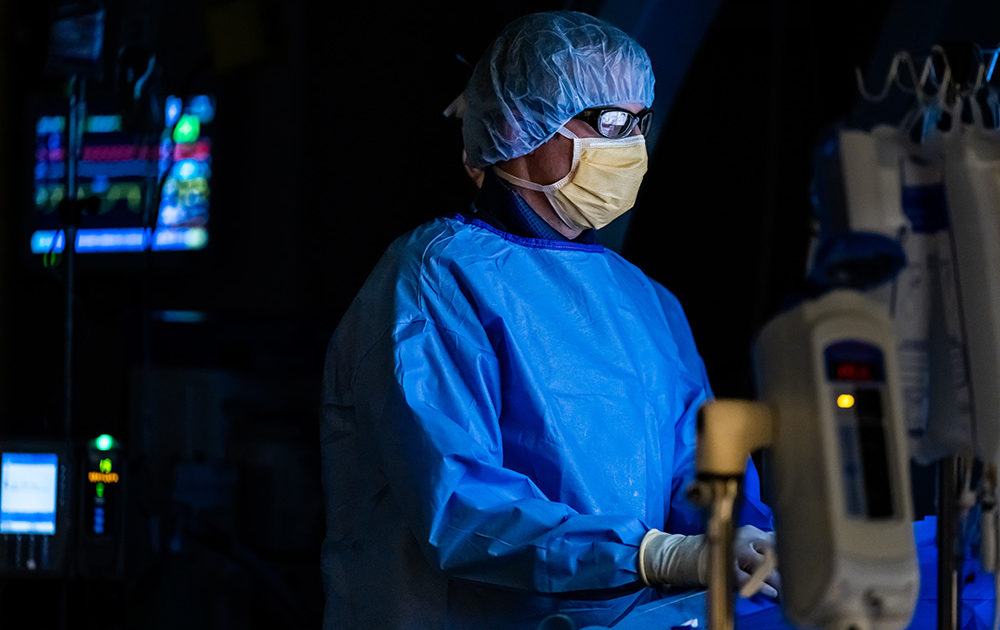
Clinical Trial Compares Surgery, Medical Management for Stroke Prevention
Barrow Neurological Institute is participating in a clinical trial comparing surgery with intensive medical management for the prevention of strokes in people with asymptomatic carotid stenosis.
Carotid stenosis is the narrowing of the carotid arteries, which are the two major blood vessels in the neck that carry blood to the brain. The narrowing of these arteries is caused by a buildup of plaque.
“The main point of the CREST-2 trial, and really one of the great benefits of the trial, is that everybody entered into the trial is treated with intensive modern-day medical management,” said Barrow Neurosurgeon Dr. Andrew Ducruet, one of the local investigators for the CREST-2 trial.
Medical management involves using aspirin to prevent blood clot formation and other medications to reduce blood pressure and bad cholesterol, as well as making lifestyle modifications.
People who elect to participate in the study are randomly placed into one of two groups. One group is treated with only medical management, the other with a combination of medical management and a procedure to restore blood flow to the blocked artery known as revascularization surgery.
Stenting and endarterectomy are the two kinds of revascularization surgery used for carotid stenosis. Stenting involves the placement of a small mesh cage inside a blood vessel to push the vessel walls open. Endarterectomy is the surgical removal of plaque buildup from a blood vessel.
Whether the patients receiving surgery should undergo stenting or endarterectomy is decided by the patients and their doctor before they are placed into the groups. Trial investigators have been carefully screened so that only those surgeons with a low complication rate are permitted to enter patients into the trial.
“One of the reasons that the trial is being conducted is because medical management has improved so dramatically over the years that it may be difficult to show a reduction in stroke with treatment above and beyond maximal medical management,” Dr. Ducruet said.
The CREST-1 trial compared the two revascularization procedures, stenting versus endarterectomy, but it did not compare revascularization surgery to medical management alone. The first trial also included both symptomatic and asymptomatic patients.
Medical management has improved so dramatically over the years that it may be difficult to show a reduction in stroke with treatment above and beyond maximal medical management.
-Andrew Ducruet, MD, Barrow Neurosurgeon
“Patients who have symptoms are a totally different ballgame,” Dr. Ducruet said. “If a patient who suffers a stroke or transient ischemic attack (TIA) is found to have a significant carotid stenosis, we know without a shadow of a doubt that they benefit from prompt revascularization.”
He said the CREST-1 trial showed no significant difference in the primary outcome measure in patients who underwent stenting versus those who underwent endarterectomy.
“But that study also raised the question: what happens if we compare these treatment modalities to medical management alone?” Dr. Ducruet said. “Given the decreased risk of stroke that other recent studies have observed in patients treated with intensive medical management, it is important to once again compare both carotid stenting and endarterectomy to intensive medical management.”
According to Dr. Ducruet, asymptomatic carotid stenosis is often discovered when a primary care doctor uses a stethoscope to listen to a patient’s neck and hears a bruit – an abnormal sound caused by turbulent blood flow. Other times, narrowing of the arteries appears on imaging studies conducted for other reasons.
The CREST-2 trial is seeking to enroll a total of 2,480 participants across the United States and Canada. Eligible patients must have narrowing of 70 percent or greater in at least one of their carotid arteries. They must also be at least 35 years old, lack other serious medical complications, and have no prior history of revascularization surgery. They will be part of the study for up to four years.

